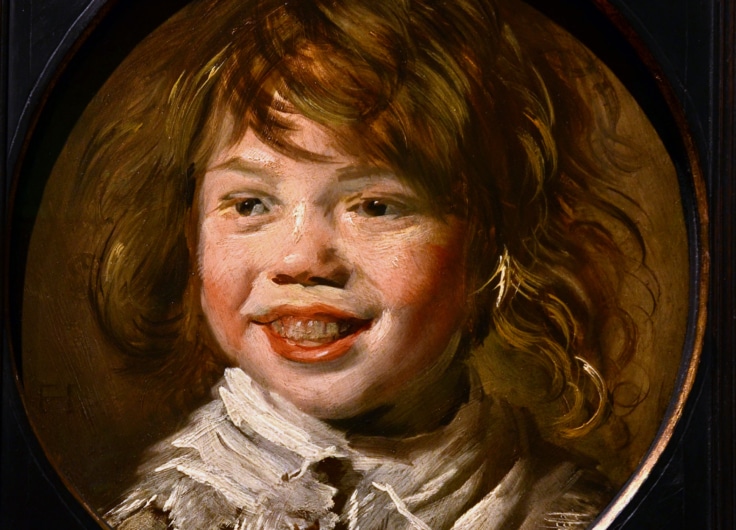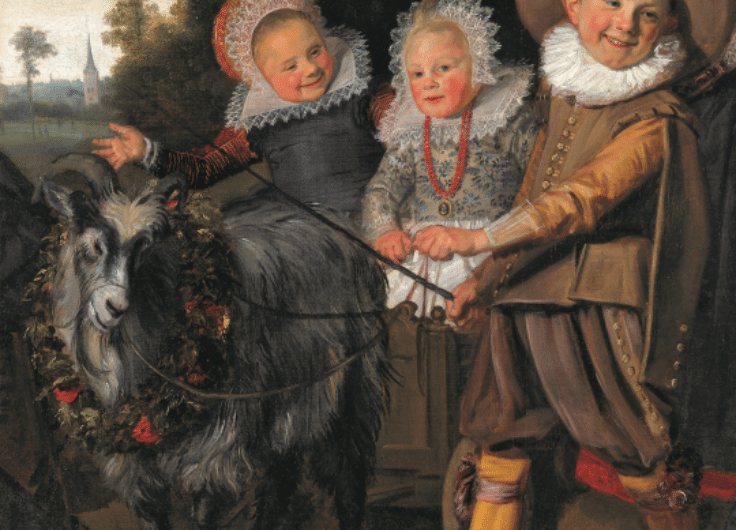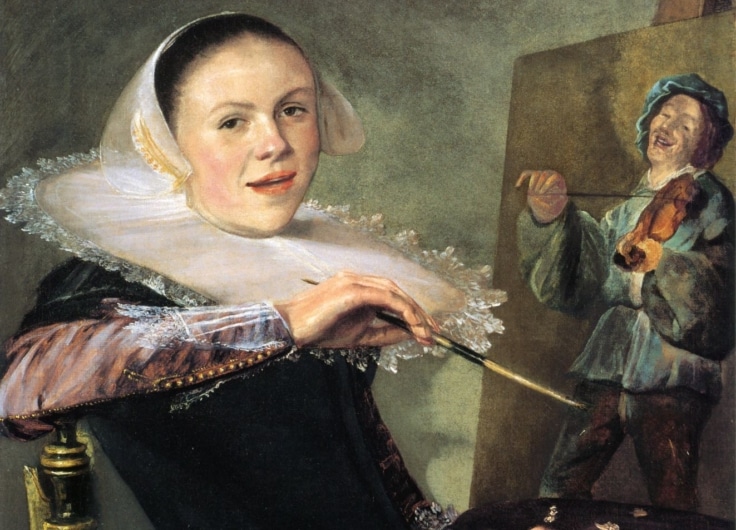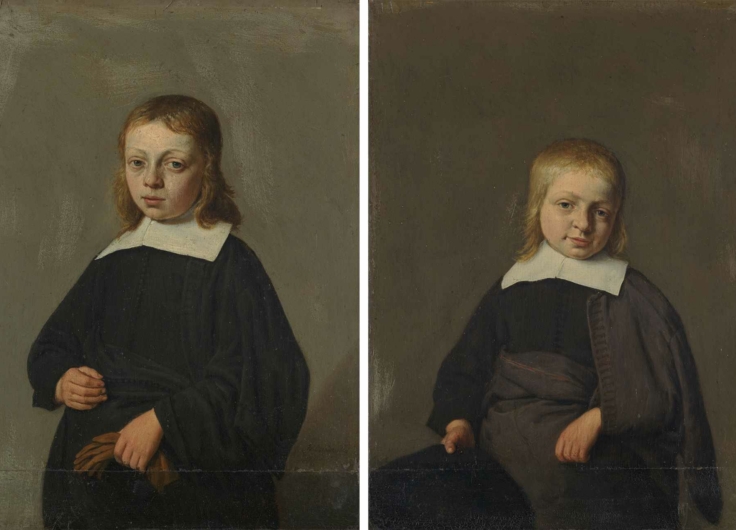How Newcomers From the South Changed Art in Haarlem
Would art have flourished in Haarlem between 1580-1630 without refugees from Flanders and Brabant? Frans Hals, Karel van Mander and Lieven de Key turned the city into a breeding ground that attracted artists and entrepreneurs. This visual story can be seen in the exhibition Newcomers. Flemish Artists in Haarlem (1580-1630) from the end of September 2022 to the beginning of 2023 in the Frans Hals Museum. Curator Norbert Middelkoop introduces us to the protagonists: from the man from Ghent who helped shape the appearance of the city and the painter who depicted the frivolous southerners, through to the artist who developed a modest Dutch variation on the rich Antwerp-style still life.
Most visitors to the Frans Hals Museum won’t realise that Frans Hals came from Antwerp. The inhabitants of Haarlem set the tone in his much-praised portraits and paintings of the civic guard and regents. But it is difficult to ignore his southern origin – on the contrary: without the artistic baggage from Antwerp, his career as a painter would have certainly followed a different course. Frans Hals was by no means the only artist in Haarlem with roots in Brabant or Flanders. A large number of well-known Haarlem artists were newcomers: arriving as adult refugees or as immigrant children.
As a young child, Frans Hals was part of a large group of migrants who moved to cities in Holland and Zeeland after the Fall of Antwerp in 1585. They had fled the violence of war and the threat of poverty, and in some cases also because of their faith. There was no place for Protestant worship in the Catholic south. In the free-spirited north, on the other hand, the economy picked up rapidly.
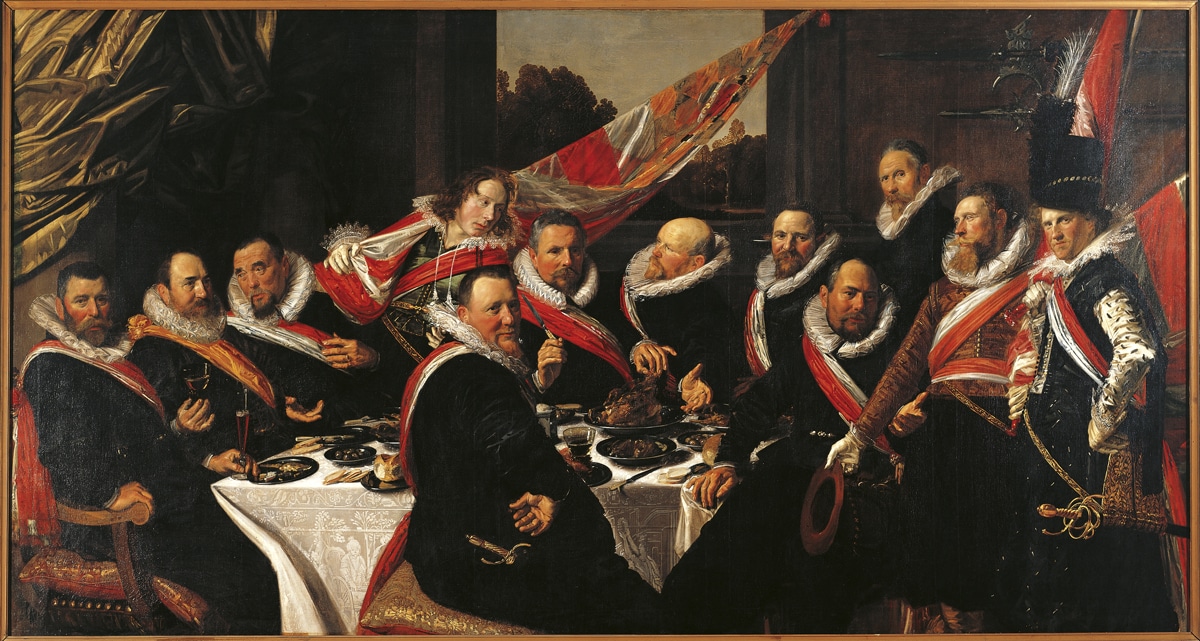 Frans Hals, The Banquet of the Officers of the St George Civic Guard, 1616
Frans Hals, The Banquet of the Officers of the St George Civic Guard, 1616© Frans Hals Museum, Haarlem
A large number of immigrants from Flanders and Brabant ended up in Haarlem, including the Hals family. The city had suffered greatly from the Spanish siege in 1572-73, as well as the occupation that followed and the great fire of 1576. Like other northern cities, Haarlem welcomed new inhabitants with favorable settlement conditions, in the expectation that their capital, skills and labour would breathe new life into the ailing economy. Subsequently, the city managed to successfully experience a major boom, thanks in part to Flemish and Brabant immigration.
Frans’ father Franchoys Hals came from Mechelen and had earned a living in Antwerp as a cloth shearer (shaving the hairs from cloth until it had a smooth surface). There he married his neighbor Adriana van Geertenryck. For both of them this was their second marriage. Because Hals senior had still stated that he was Catholic in 1585, the family must have moved to the north for the favourable economic prospects, rather than for religious reasons.
In Haarlem, the Hals family was able to benefit from the rapidly growing linen and cloth industry, which was aided by the immigration of textile workers from Kortrijk and the surrounding area, a Flemish city that had fallen into Spanish hands in 1580. Haarlem was attractive to them because of its proximity to good bleaching fields, located west of the city. Here the pure dune water ensured a high-quality linen and yarn bleach. In addition to this, bleachers from Brabant who had also moved to Haarlem, had brought about technical improvements.
From immigrant to burgomaster
One of the immigrants from Kortrijk was Passchier Lammertijn. After he arrived in Haarlem in his twenties, he contributed significantly to the flourishing of the production of Haarlem damask linen, a luxury product which made its way to the States General of the Netherlands, as well as foreign royal courts. A substantial part of his production has been preserved; perhaps even the tablecloth in Frans Hals’ earliest civic guard painting is one from Lammertijn’s workshop.
Another well-known textile producer and merchant was Quirijn Jansz Damast, who also came from Kortrijk. He was a second-generation immigrant, and as his name indicates, it was the production of damask linen that also enabled him to make a career in Haarlem. But it didn’t stop there; in 1627 he joined the Haarlem city government, which was anything but self-evident for the descendant of a Flemish family. Eventually he would even hold the office of burgomaster.
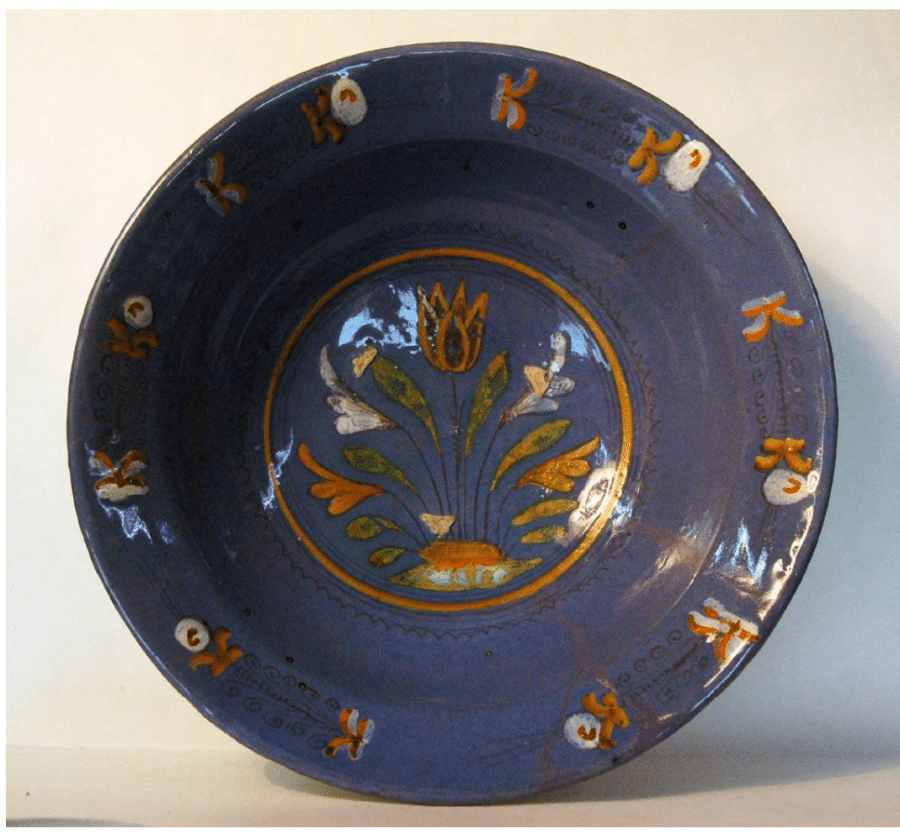 Willem Jansz Verstraeten, Dish with Tulip Decor, c. 1625-45
Willem Jansz Verstraeten, Dish with Tulip Decor, c. 1625-45© Frans Hals Museum, Haarlem
The improving economy and increasing prosperity among the population of Haarlem fueled the need for luxury items, not least among the newcomers from the south. Not only did the textile industry benefit from this, but so did the relatively new pottery trade. Potter Willem Jansz Verstraeten was the son of immigrants, who came from Antwerp and settled in Haarlem around 1590. Supported by the city government, he started his own company in 1625, which in a few years grew into a very successful business, thanks to the high quality of the Italian-style decorated dishes and plates that were produced.
Lieven de Key, master mason of 'Flemish' Haarlem
No other immigrant from Flanders or Brabant left as much of a trace on the current Haarlem streetscape as Lieven de Key, from Ghent. Unlike most, he didn’t come directly to Haarlem from the south. After the fall of Ghent in 1584 and the restoration of power by the Spanish occupiers, he fled to London with his protestant reformed family for religious reasons. Here there was a large community of people from Ghent. He married in London and probably worked for several years as a stonemason, before moving to Haarlem in 1590/91 – undoubtedly attracted by the construction boom following a city-wide fire in 1576.
At first Lieven de Key worked as an employee for others, but in 1593 – remarkably quickly – he was appointed town mason. In this capacity, he was responsible for the design and delivery of many prominent buildings, such as the Zijlstraat wing of the town hall, the Vleeshal (Meat Hall), the gate of the Oude Doelen and the tower of the Nieuwe Kerk (New Church). A formal Flemish style undeniably resonates from these buildings and projects. It was also under De Key’s supervision, that the city walls and gates were restored, and his influence can be seen in the Waag (Weigh House), the Oudemannenhuis (Old Men’s Alms House – now the Frans Hals Museum), as well as the many stepped gables across the city.
The stamp that De Key has left on the appearance of the city has given Haarlem, more than any other city in Holland, a distinctly Flemish character.
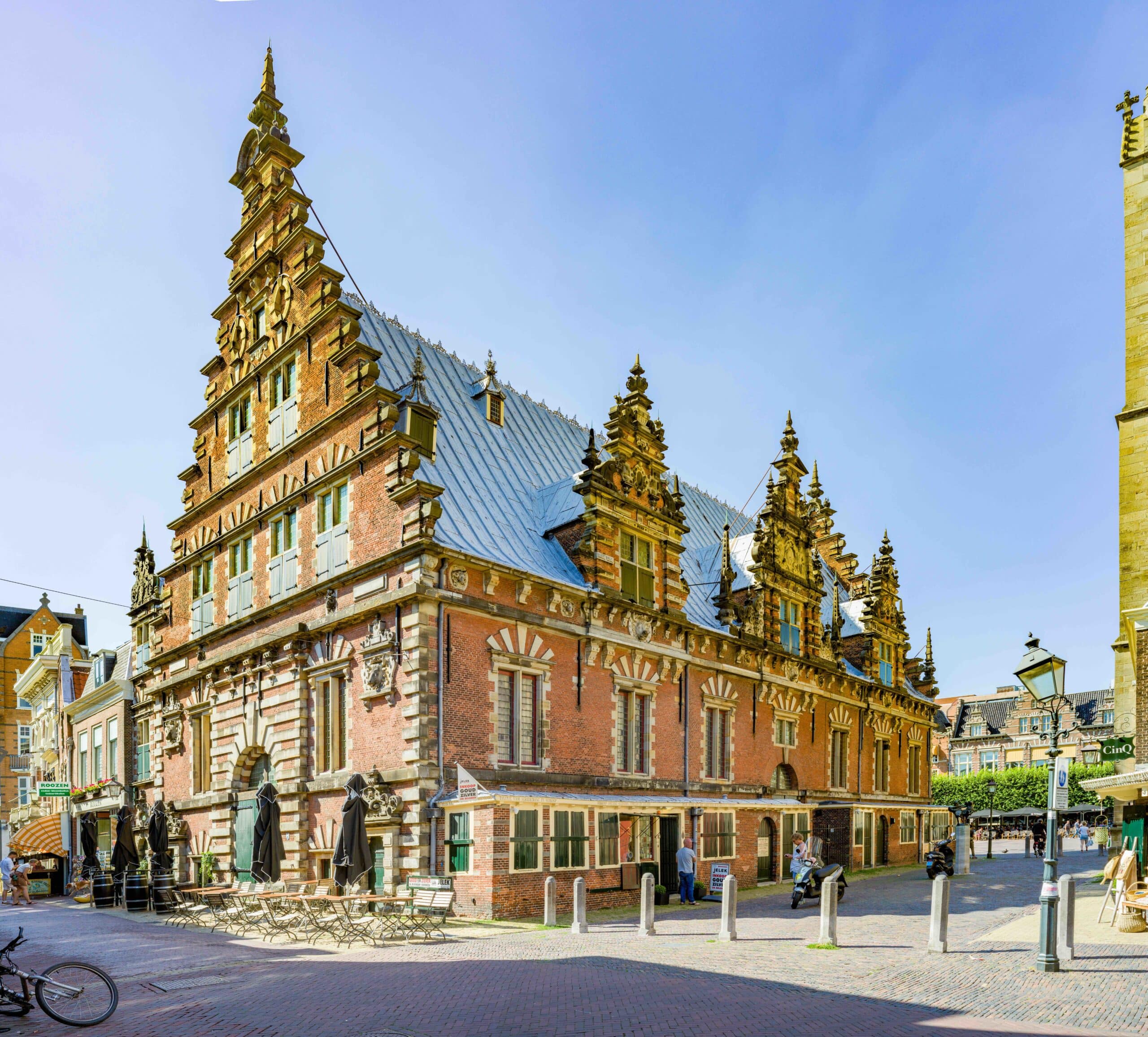 The Vleeshal in Haarlem, designed and delivered by Lieven de Key, originally from Ghent
The Vleeshal in Haarlem, designed and delivered by Lieven de Key, originally from Ghent© Wolfgang Moroder
Karel van Mander and good taste
One of Haarlem’s great artistic pioneers was Karel van Mander, born in Meulebeke. Returning to Flanders after a journey through Italian art cities, Vienna and Nuremberg, the artist-writer was confronted with looting in his native village. Via Kortrijk and Bruges, van Mander and his family ended up in Haarlem in around 1583. His name is associated with the foundation of the Flemish chamber of rhetoric De Witte Angieren (The White Carnations) in 1592. This association is a fair one, as it is certain that as a theoretician and admirer of Italian art he propagated the ideals of the Renaissance in Haarlem – in particular the mannerist style of Bartholomeus Spranger, who was educated in Italy and lived in Central European court circles.
Even more than in his own work, Van Mander’s ideas are reflected in that of his younger, talented kindred spirits Hendrick Goltzius and Cornelis van Haarlem, with whom he set up an ‘academy’, in order to, among other things, work on life drawing. Goltzius, who came from Jülich, initially made a name for himself as an engraver, but later became a painter too. Cornelis had started his apprenticeship with Pieter Pietersz, the son of Pieter Aertsen, who returned to Amsterdam after growing up in Antwerp and was active in Haarlem for about 14 years from 1569. Cornelis continued his education in Rouen and Antwerp, before returning to Haarlem in 1580/81, where a rich career as a history and portrait painter awaited him.
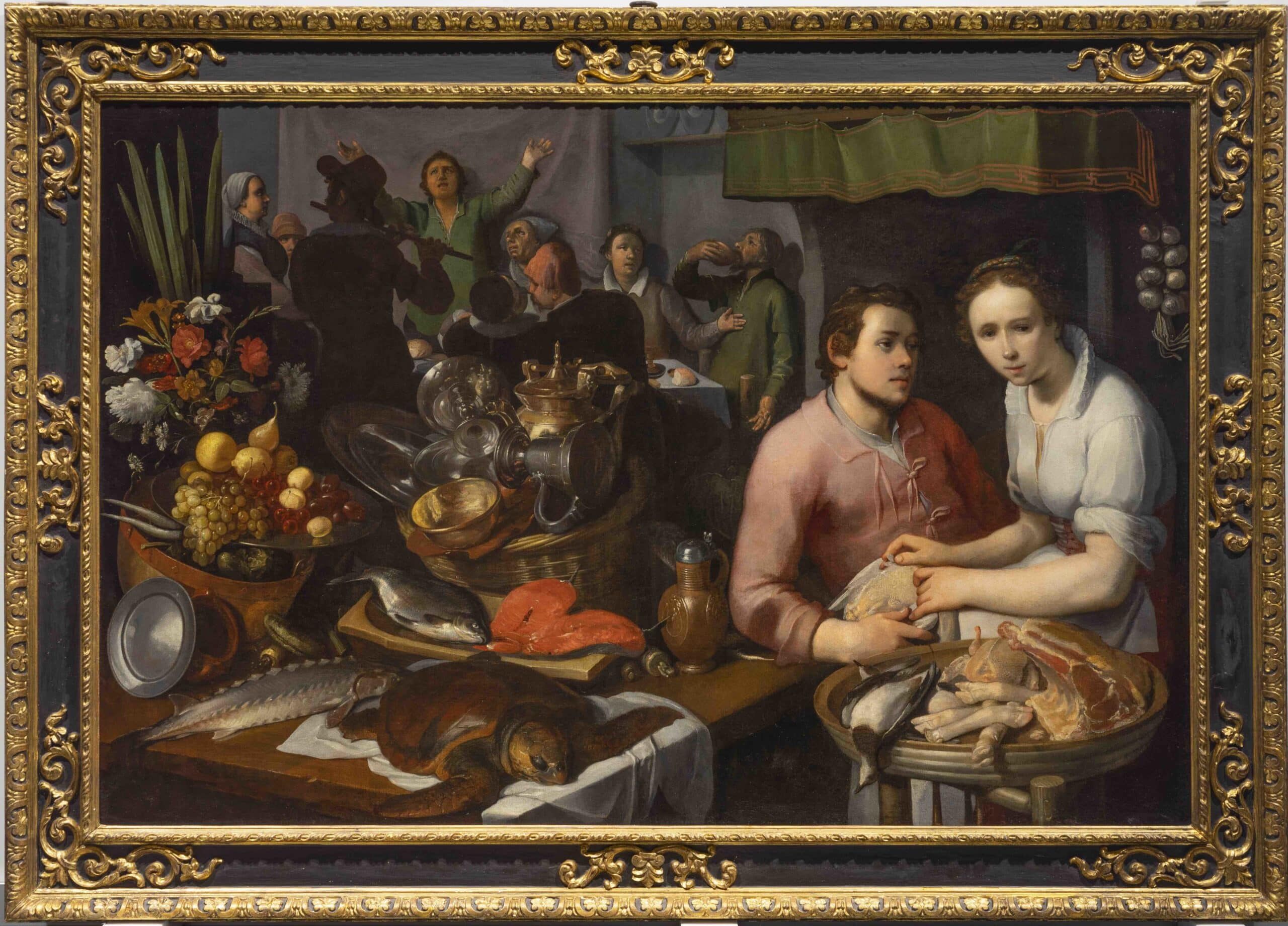 Cornelis Cornelisz van Haarlem, Kitchen Piece, 1596
Cornelis Cornelisz van Haarlem, Kitchen Piece, 1596© private collection
It is thanks to the Schilder-Boeck (1604), that we are so well informed about the lives of Goltzius and Cornelis. In his magnum opus, Van Mander describes the lives of classical, Italian artists as well as artists from both the north and south of the Netherlands. The biographies, including those of Goltzius and Cornelis, are preceded by the didactic poem ‘Foundation of the Noble, Free Art of Painting’, in which the author encourages the next generation of young painters to focus primarily on history painting – the genre that was most highly regarded within art-theory. In depicting stories from the Bible, mythology and history, erudition and ingenuity were necessary qualities. Portrait painting came lower in the rankings because it only recorded what was visible, and so according to Van Mander was ‘a side road of art’.
If Goltzius and Cornelis, with their lofty themes, could count on Van Mander’s appreciation, it is highly questionable whether this would also have applied to a number of Flemish and Brabant painters who gained notoriety after his death in 1606. Many of them focused on genres that were less highly regarded in art theory, including the portrait, landscapes, and still life – thus paving the way for an unprecedented flourishing of painting in Haarlem.
Frans Hals, master of the portrait
Ironically, Van Mander’s most famous pupil, Frans Hals, steered clear of history painting and instead developed into the leading portraitist in Haarlem between 1620 and 1645. Virtually nothing is known about his early years. Assuming that Hals was indeed apprenticed to Van Mander, as the latter’s biographer reports in 1618, it is uncertain what kept him occupied in his twenties. Hals’s earliest dated portrait is from 1611, when he was almost thirty years old. Van Mander left Haarlem in 1603 and settled in Amsterdam a year later, where he died in 1606. Perhaps Hals trained in part in Amsterdam, potentially also after Van Mander’s death?
It is certain that in 1610 he registered with the The Guild of Saint Luke in Haarlem and married Anneke Harmensdr, the daughter of a protestant (reformed) bleacher family in Haarlem. With his registration and marriage, Hals emphatically manifested himself as a Haarlemer. This was reinforced by the fact that he became a member of the Haarlem chamber of rhetoric De Wijngaertrancken in 1616, rather than becoming a member of the De Witte Angieren. After the Twelve Years’ Truce was agreed between the Dutch Republic and the Habsburg (Spanish) Netherlands in 1609, when travel became easier again, he apparently saw no reason to return to his native country. On the contrary – after Anneke’s premature death, he delivered a civic guard painting for the Sint-Jorisdoelen in 1616, which marked his definitive breakthrough as a portrait painter. He did stay in Antwerp for a few months that same year, probably to arrange family matters after the death of his father, but soon after he was back in Haarlem. His second marriage, in 1617, was also to a woman from Haarlem – Liesbeth Reyniers, the daughter of a family of glaziers.
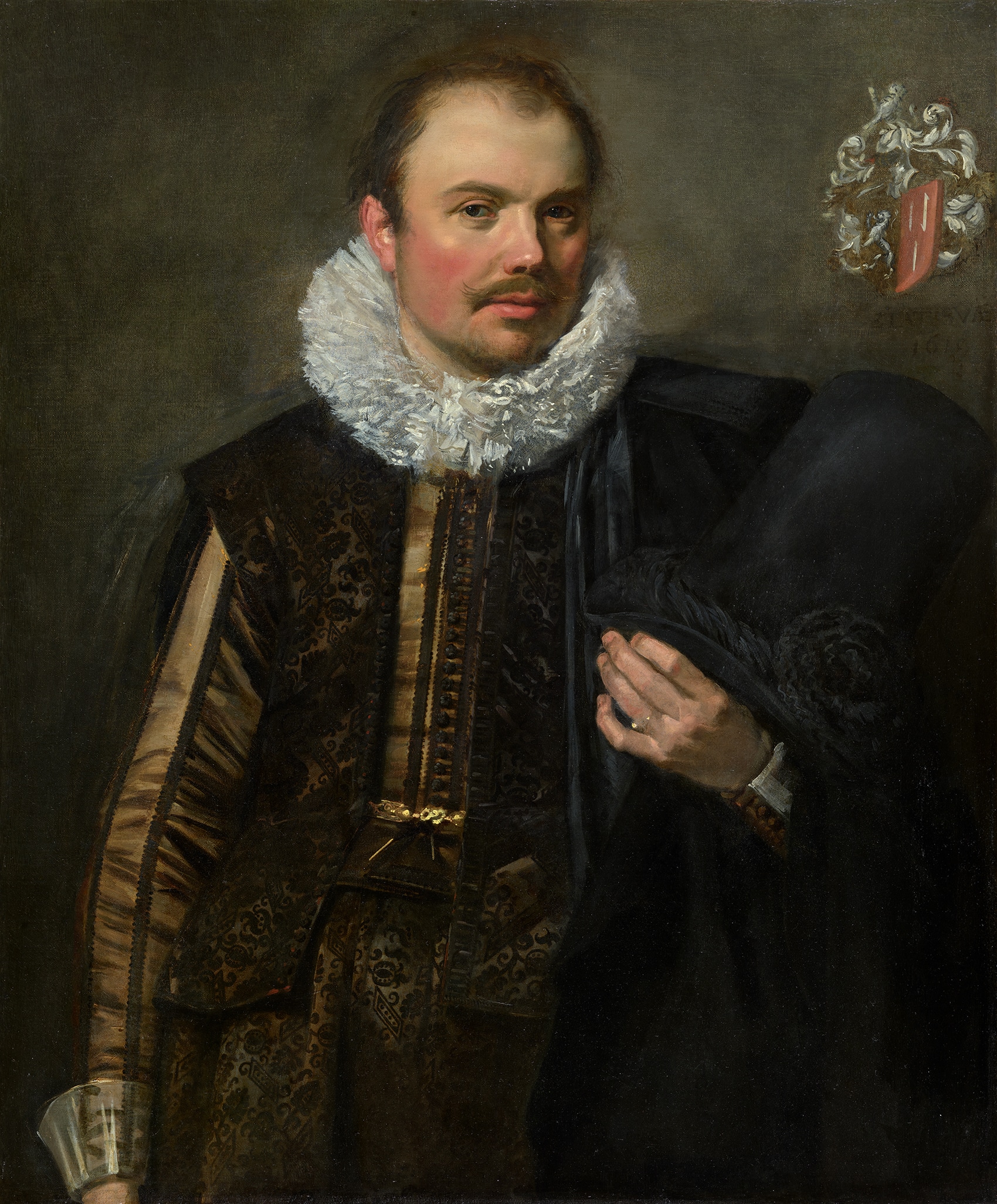 Frans Hals, Portrait of an Unknown Man, 1619. Judging from the expensive, colourful clothing, this young man could be one of the many newcomers from Flanders. Native Haarlemmers preferred to be depicted in a more sober black. Unfortunately, the family coat of arms has not yet been identified.
Frans Hals, Portrait of an Unknown Man, 1619. Judging from the expensive, colourful clothing, this young man could be one of the many newcomers from Flanders. Native Haarlemmers preferred to be depicted in a more sober black. Unfortunately, the family coat of arms has not yet been identified.© Musée des Beaux-Arts, Dijon
Following his first painting for the civic guard, a stream of commissions awaited Hals, from both Haarlem natives and newcomers from the south. The change of legislative in 1618, ordered by Stadholder Prince Maurice, catalysed Hals’ career even further. Just like in other cities, members of the old city government were removed from office. In Haarlem, this offered opportunities to a generation of young, wealthy brewers; they formed the core of Hals’ clientele, alongside wealthy people of Flemish or Brabant origin.
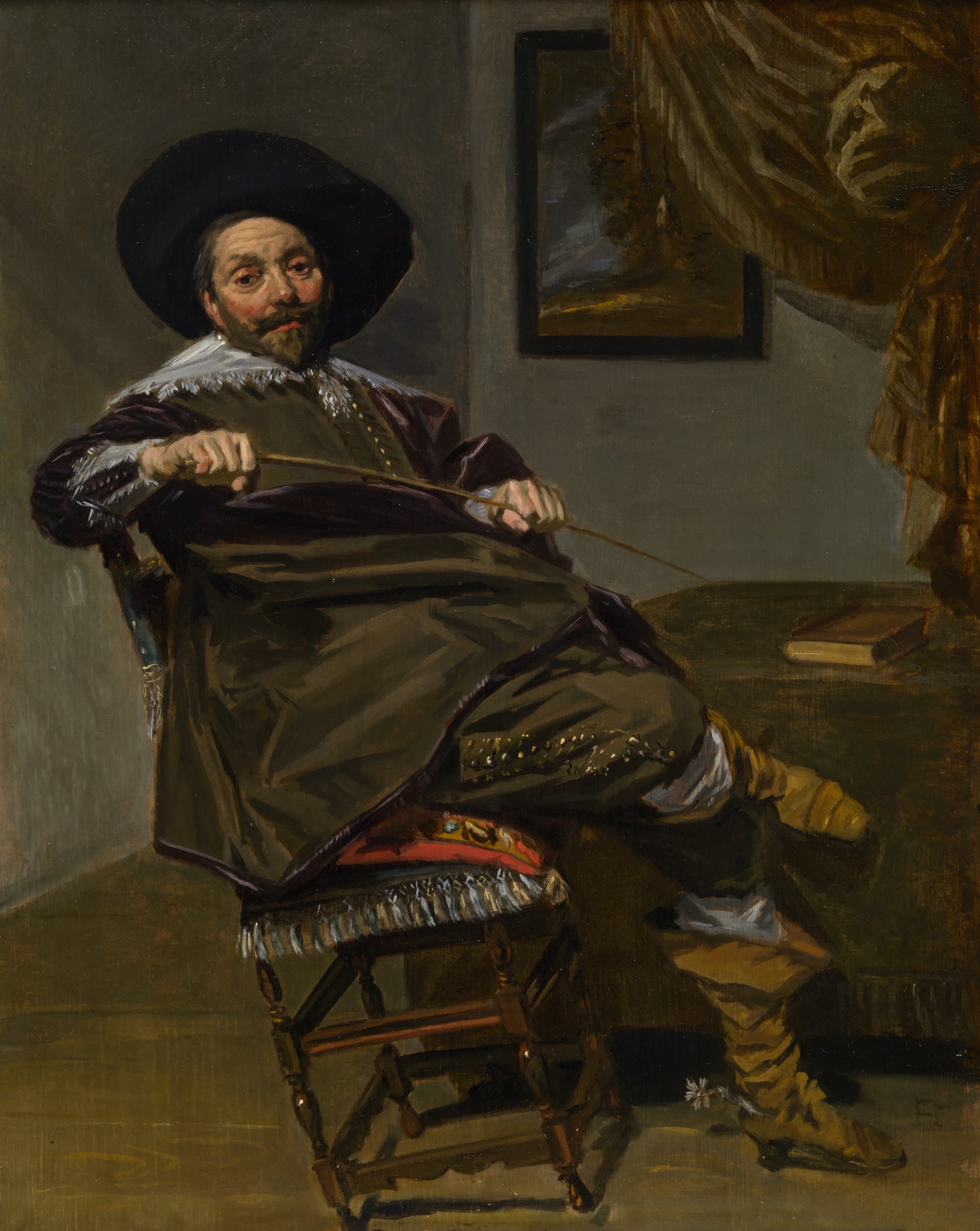 Frans Hals, Willem van Heythuysen, c. 1652 (copied from a portrait c. 1634)
Frans Hals, Willem van Heythuysen, c. 1652 (copied from a portrait c. 1634)© Royal Museums of Fine Arts of Belgium, Brussels
What’s striking is that Hals often depicted his clients of southern origin (not all of these portraits have been identified) in dynamic poses, full of emotion: Isaac Massa turned around in his chair, or having fun together with his brand new wife; a friendly looking Pieter van den Broecke, or the relaxed Willem van Heythuysen, tipping back on his chair. An exception to this rule, are the portraits of Lucas de Clercq and his wife Feyntje van Steenkiste from 1635, whose fathers came from Ghent and Menen respectively. Their Mennonite background required sober dress without cuffs, and their still pose and calm facial expressions are also more in keeping with Hals’ usually more modest depictions of native Haarlem residents.
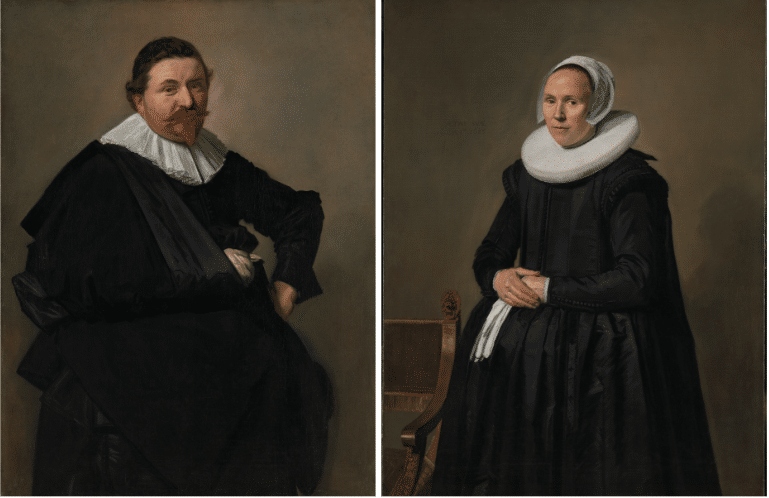 Frans Hals, Lucas de Clercq and Feyntje van Steenkiste, 1635
Frans Hals, Lucas de Clercq and Feyntje van Steenkiste, 1635© Rijksmuseum, Amsterdam
As a teacher, Frans Hals influenced a generation of painters that came after him – including five of his sons. Of his other pupils, Adriaen Brouwer, Adriaen van Ostade and Judith Leyster had roots in Flanders or Brabant. Hals probably also trained his younger brother Dirck as a painter.
Esaias van de Velde: Dutch landscapes and frivolous youngsters
In the same way that Frans Hals’ contribution was groundbreaking for portraiture in Haarlem, his slightly younger contemporary Esaias van de Velde manifested himself in a similar way as a painter of the realistic landscape. He was born in Amsterdam to protestant reformed parents from Antwerp. He probably completed his apprenticeship there with the originally Brabant artists David Vinckboons or Gillis van Coninxloo III. After the death of his father, who was also a painter, the family moved to Haarlem in 1609 or 1610, where Esaias married a woman from Ghent. Like Hals, his career started relatively late, with work dated from 1613. Although some early history paintings by him have survived, Van de Velde is best known for depicting the Dutch landscape – without mountains or ruins. Haarlem’s surroundings, rich in water and not far from the dunes, provided ample inspiration for this, although he did regularly add a few spectacular robbery scenes – as a narrative element in the foreground.
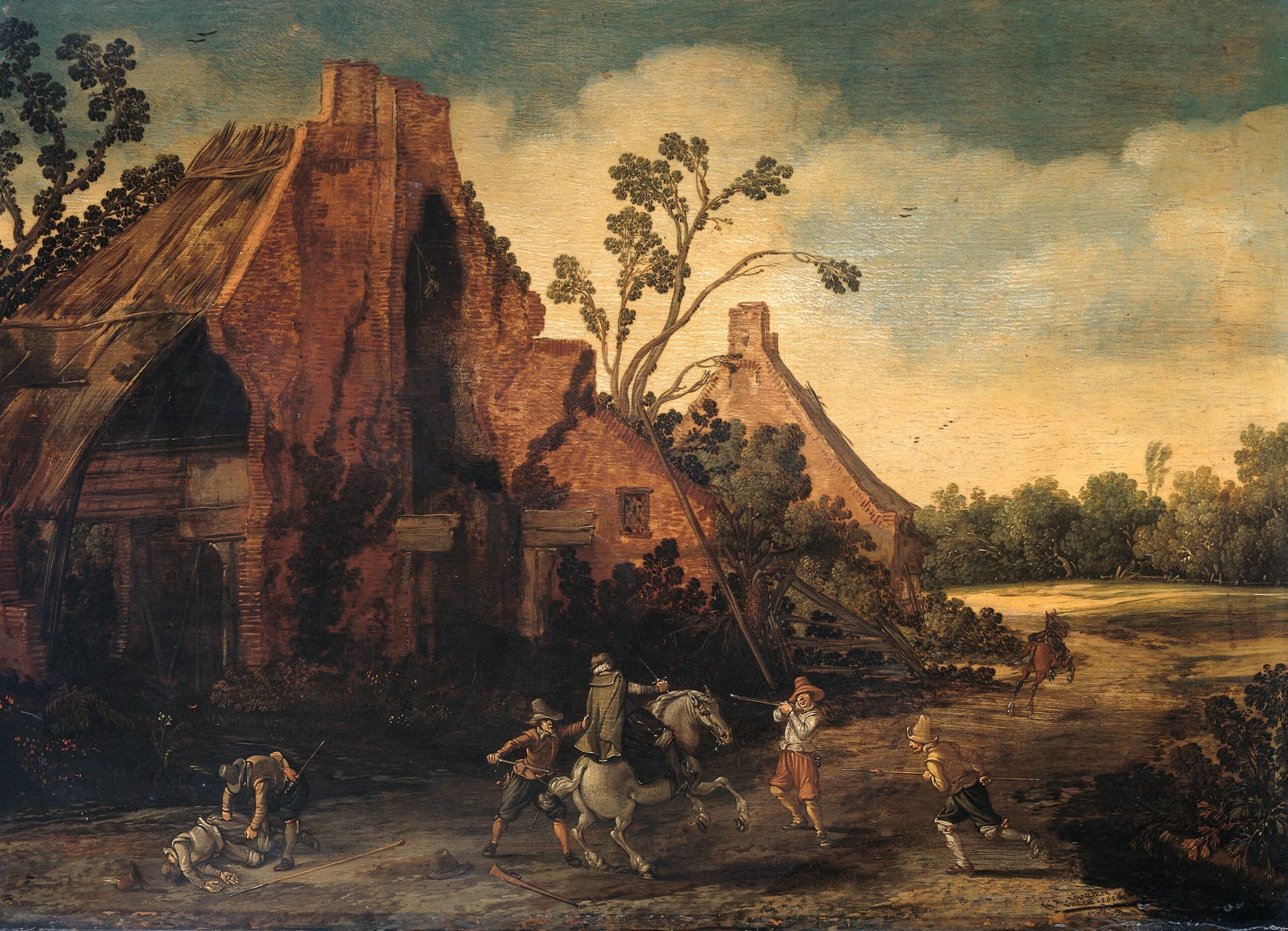 Esaias van de Velde, The Robbery, 1616
Esaias van de Velde, The Robbery, 1616© Rijksmuseum, Amsterdam
Another genre of painting that Van de Velde introduced is that of the ‘merry company’. Paintings with often richly dressed young men and women, who are indulging in the pleasures of luxury life in beautiful gardens or homes. Judging by their expensive and colourful clothes, these couples could be a reference to the lifestyle of newcomers from the south. Immigrants from Flanders and Brabant who settled in Haarlem were criticised by local ministers for how they looked – accused of setting a bad example for the native youth. Having said this, Van de Velde’s tasteful compositions undoubtedly contain a moralistic message too, encouraging the viewer to keep their distance from frivolous behaviour and a debauched lifestyle.
Under the influence of Van de Velde and because of the demand for these paintings, Dirck Hals also devoted himself to creating carefree merry company paintings, as did Willem Buytewech, who was active in Haarlem for several years around 1615.
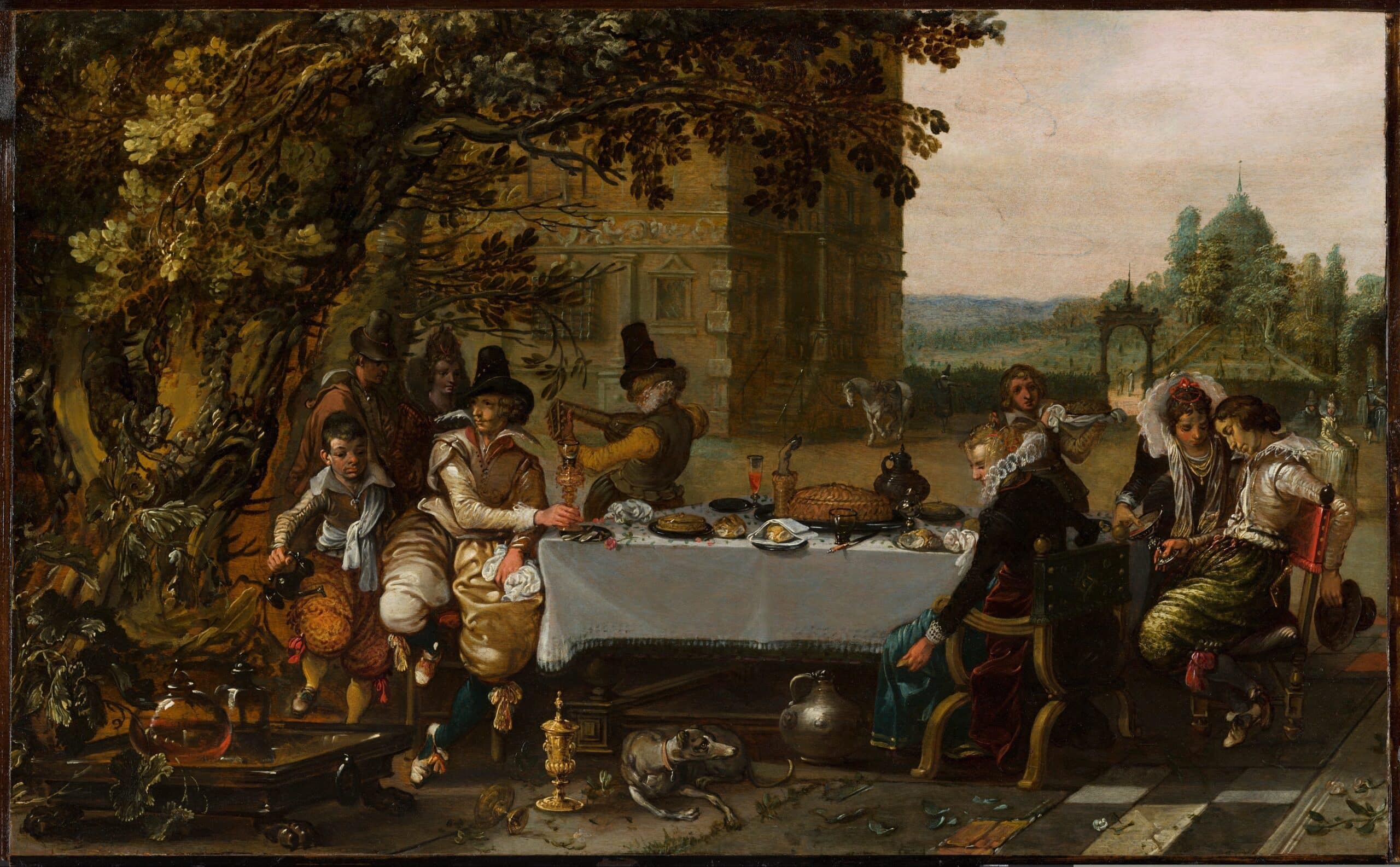 Esaias van de Velde, Elegant Company at a Banquet in a Garden, c. 1612-13
Esaias van de Velde, Elegant Company at a Banquet in a Garden, c. 1612-13© Stichting P. & N. de Boer
Van de Velde’s students in Haarlem included Jan van Goyen, one of the first great masters of the Dutch landscape, and Pieter de Molijn. De Molijn was the child of Flemish parents who, like the De Key family, had emigrated to England for religious reasons. Molijn probably lived in Haarlem from 1609, where he became a member of the Guild of Saint Luke in 1616. Like his teacher, he frequently painted realistic Dutch landscapes, occasionally embellished with a modest narrative element. His name is also mentioned as a painter of the landscape backgrounds in some of Frans Hals’ portraits.
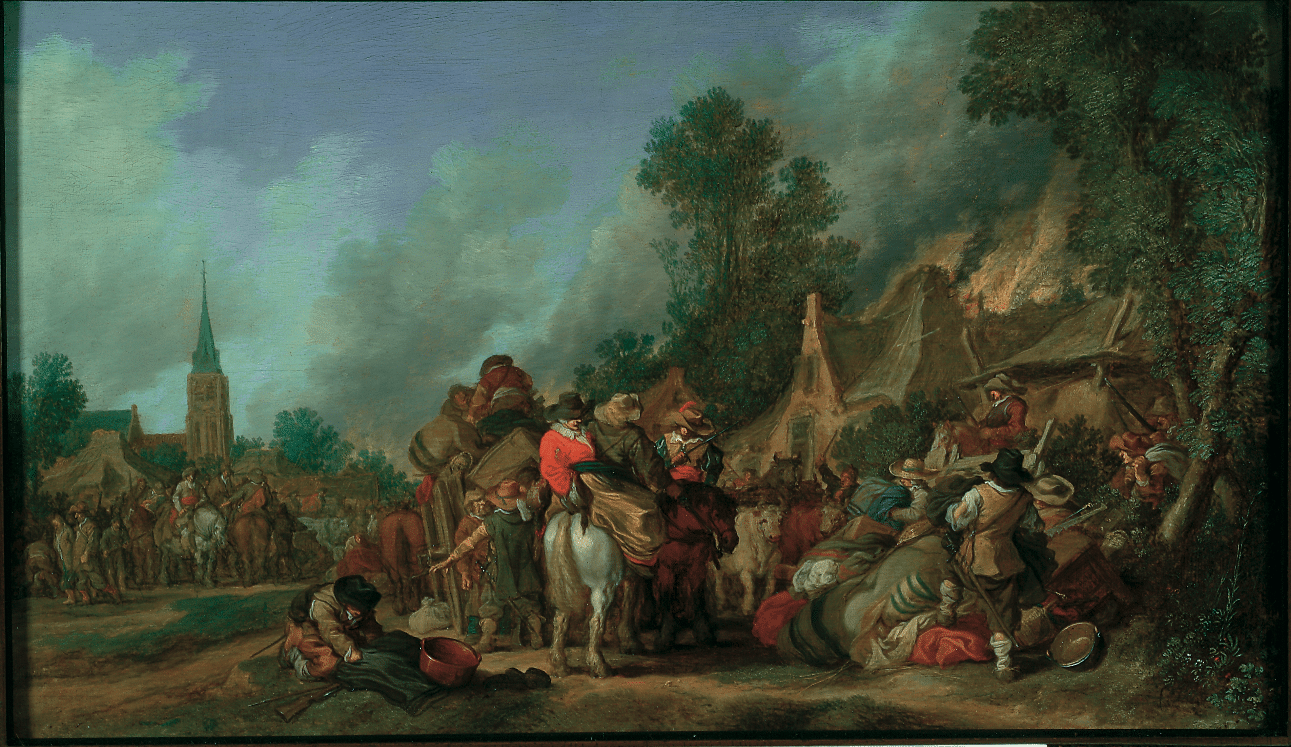 Pieter de Molijn, Soldiers Plundering a Village, 1630
Pieter de Molijn, Soldiers Plundering a Village, 1630© Frans Hals Museum, Haarlem
Pieter Claesz and the modest still life
Of all the artists from the south who settled in Haarlem after 1620, Pieter Claesz from Berchem is without doubt the most important. In 1620 he was still registered with the Antwerp painters’ guild, but when his son was baptised in 1621/22 he was living in Haarlem. The painter chose to try his luck in Haarlem, where the market for still life painting was fed by at least three painters – one of whom, Nicolaes Gillis, was probably also from Antwerp. Trained in the tradition of the Antwerp still life with its bountifully set tables, Pieter Claesz developed a more modest Dutch variant – that of the small banquet or breakfast. His balanced compositions with dishes, rummers, food and drink, have a lower point of view and a more subdued palette.
At the end of the 1620s, Pieter Claesz was joined in his field by Willem Claesz Heda, a contemporary and rival, who was unmistakably influenced by him.
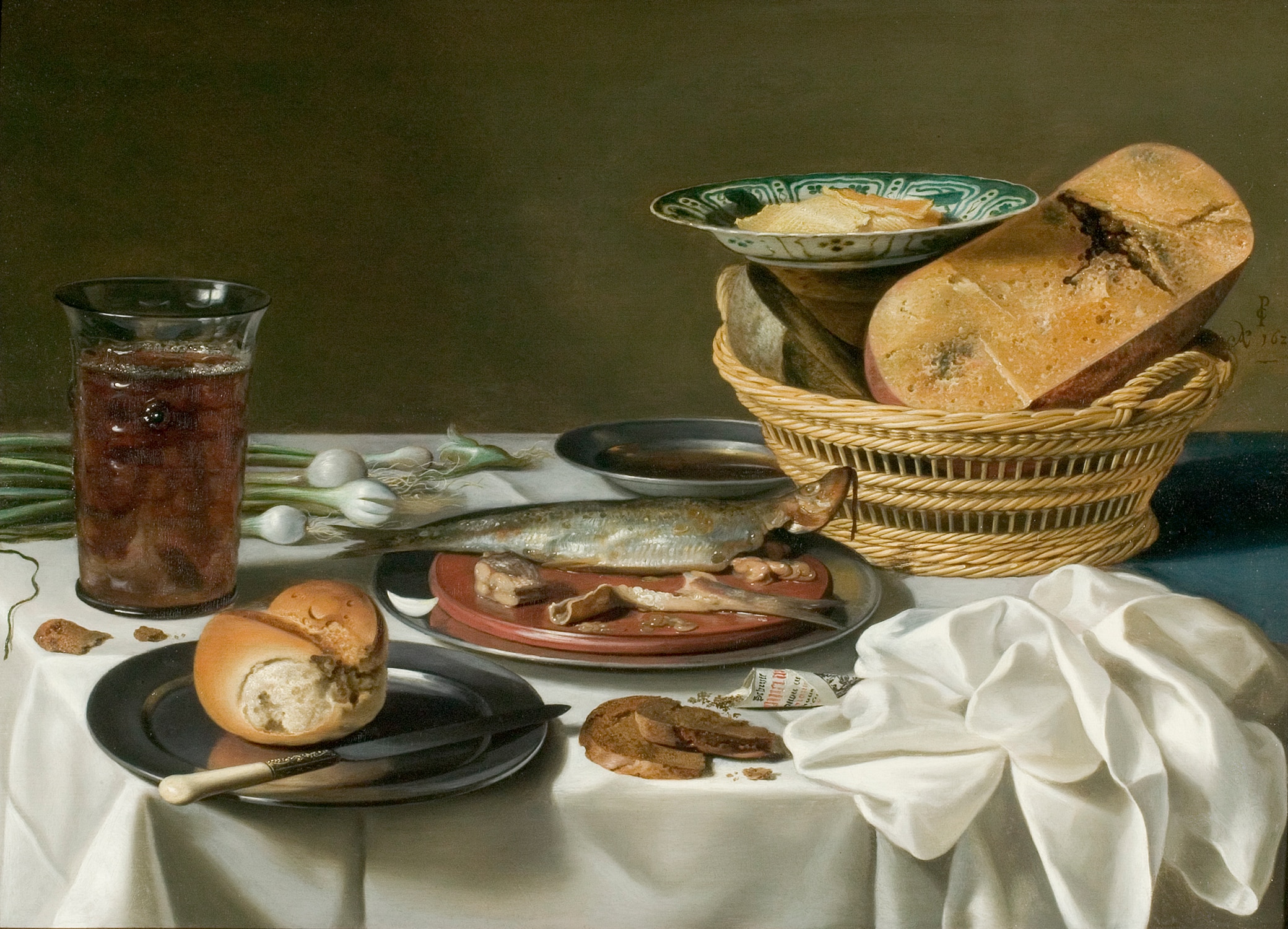 Pieter Claesz, Still Life of a Breakfast, 1625
Pieter Claesz, Still Life of a Breakfast, 1625© Frans Hals Museum, Haarlem / on loan from private collection
Passers-by
Not all artists of Flemish and Brabant origin continued to work exclusively in Haarlem for the rest of their lives. Frans Hals also made portraits of residents of Leiden, Amsterdam and Rotterdam, and Lieven de Key not only designed for projects in Haarlem, but also in Leiden and Utrecht. However, whereas they continued to live in Haarlem, Passchier Lammertijn left for Alkmaar in 1607, and then returned to Haarlem, only to leave for Denmark in 1619, where he received royal commissions from the Court of King Christian IV. Esaias van de Velde exchanged Haarlem as his home for The Hague in 1618, after being attracted by appreciative critique from court circles close to Stadholder Prince Maurice.
Of the aforementioned painters, Adriaen Brouwer only stayed briefly in Haarlem. After his assumed apprenticeship with Hals and his documented presence in both Haarlem and Amsterdam in 1626, he returned to the south and died in Antwerp at a young age. His extraordinarily expressive paintings of unrefined inn scenes and pub louts were prized by great masters such as Rubens and Rembrandt.
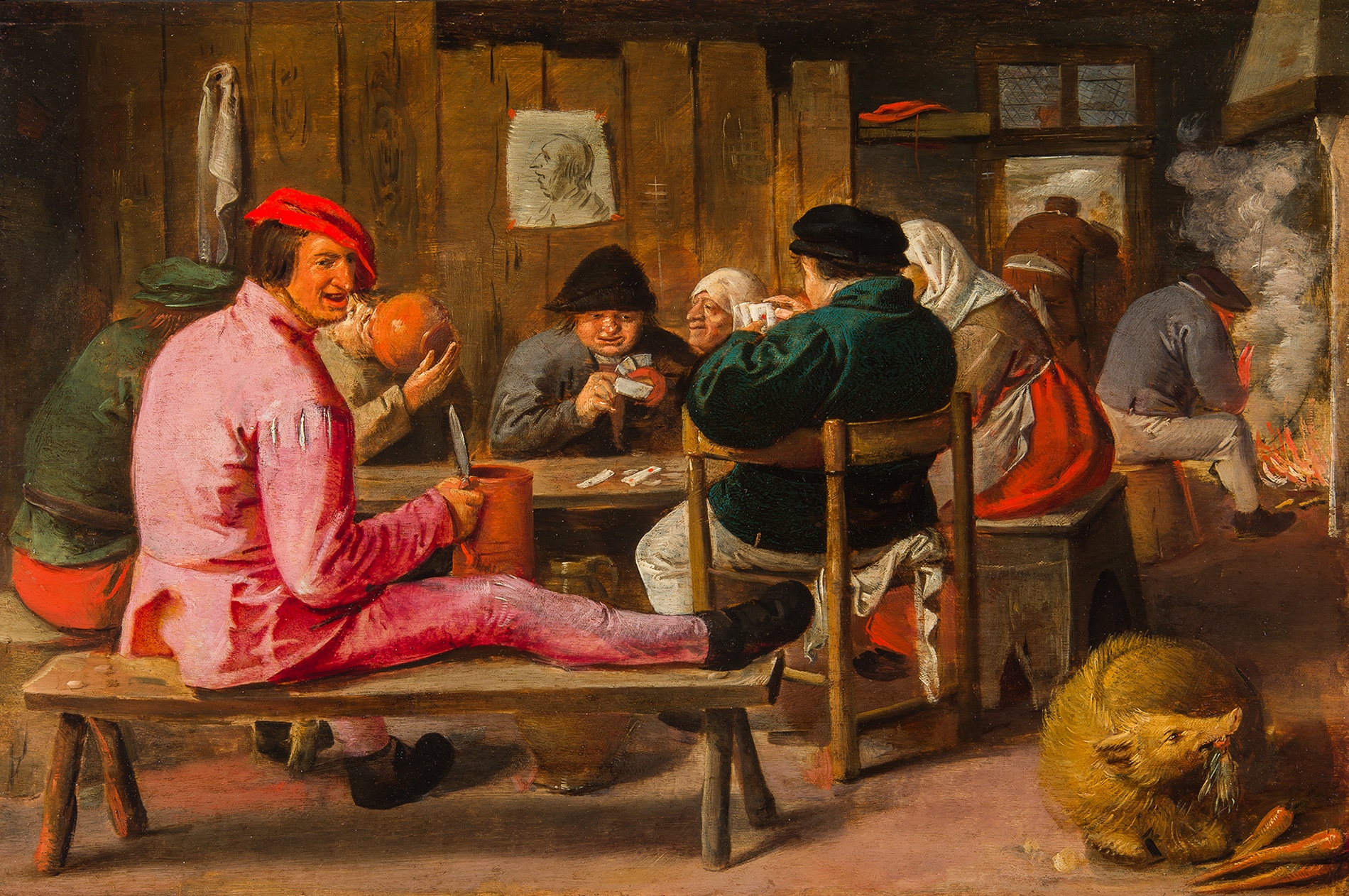 Adriaen Brouwer, Farmers Playing Cards at an Inn, c. 1624-25
Adriaen Brouwer, Farmers Playing Cards at an Inn, c. 1624-25© Museum Het Rembrandthuis, Amsterdam / on loan from Bijl - van Urk
Flourishing thanks to Southerners
It’s no exaggeration to say that the prodigious flourishing of the Haarlem arts scene between 1580-1630 would have been unimaginable without Flemish and Brabant influence. With Karel van Mander as the main initiator, within just a few decades Haarlem grew into a breeding ground for artistic innovation, which in turn made it attractive to yet more artists. Dutch traditions and Flemish influences merged within existing genres such as history and portrait painting, while new genres were developed based on southern examples: the Dutch landscape, peasant scenes, the merry company, marine painting, and the breakfast still life.
At least as important as the influx of artists from Flanders and Brabant was their clientele, consisting of newcomers in equal measure. Their presence gave an important boost to the demand for paintings, especially after many came to realise that returning to their native country was out of the question, or that a better future was possible for them in the north.


